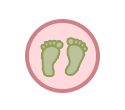How does one start a home food storage program? I've compiled a list of 5 different methods I find useful.

- Use a food storage calculator. Enter the number of people in your household, their ages, and how many months you want the food storage to last, and it will give a list of how many pounds to buy of a variety of products. The downfall is it may not be personalized to fit your family. We did this when we first got married 5 years ago and still have the majority of the tomato paste cans it recommended still on the shelf.
- Compile an ingredients list to make 14 of your family's favorite meals, and multiply by 6, = 3 months of meals your family will love! The only hard part is, are the 14 favorite meals' ingredients ones that can be stored for 3+ months?
- Instead of buying just 1, buy extra! For example, if a jar of applesauce is on the grocery list, don't buy just one, but load up a few more. If this is done with each storeable item on the list at each grocery shopping, pretty soon the pantry will be stocked with a large supply of food your family regularly eats. Just be sure to rotate regularly, and keep re-stocking. The downside to this method is unless you're very methodical about it, you end up with a food supply where you're not exactly sure how long the applesauce will last in an emergency vs. the storage of tomato sauce, or even how long the storage as a whole will last. Fix that by using Excel, below.
- Use an Excel Spreadsheet by downloading the 3-month supply Excel spreadsheet from foodstoragemadeasy.net. This is kind of like the 14-meal plan, except you enter in all the ingredients for breakfast, lunch, snack, and dinner for one month and Excel multiplies the result by 3 to get a three month supply. Then you can just print off a 3-month grocery list! With a little knowledge about Excel, this can be tweaked to make a one year food supply and
 have several other useful functions such as a price calculator.
have several other useful functions such as a price calculator. - Food Storage Made Easy also has a baby steps program with nine simple steps covering making room, evacuation plans, 72-hour kits, water storage, in 10 easy steps. Start here.
- Many ministries have excellent resources (such as on-line help), or canneries, to help one get started.

 have several other useful functions such as a price calculator.
have several other useful functions such as a price calculator.


No comments:
Post a Comment